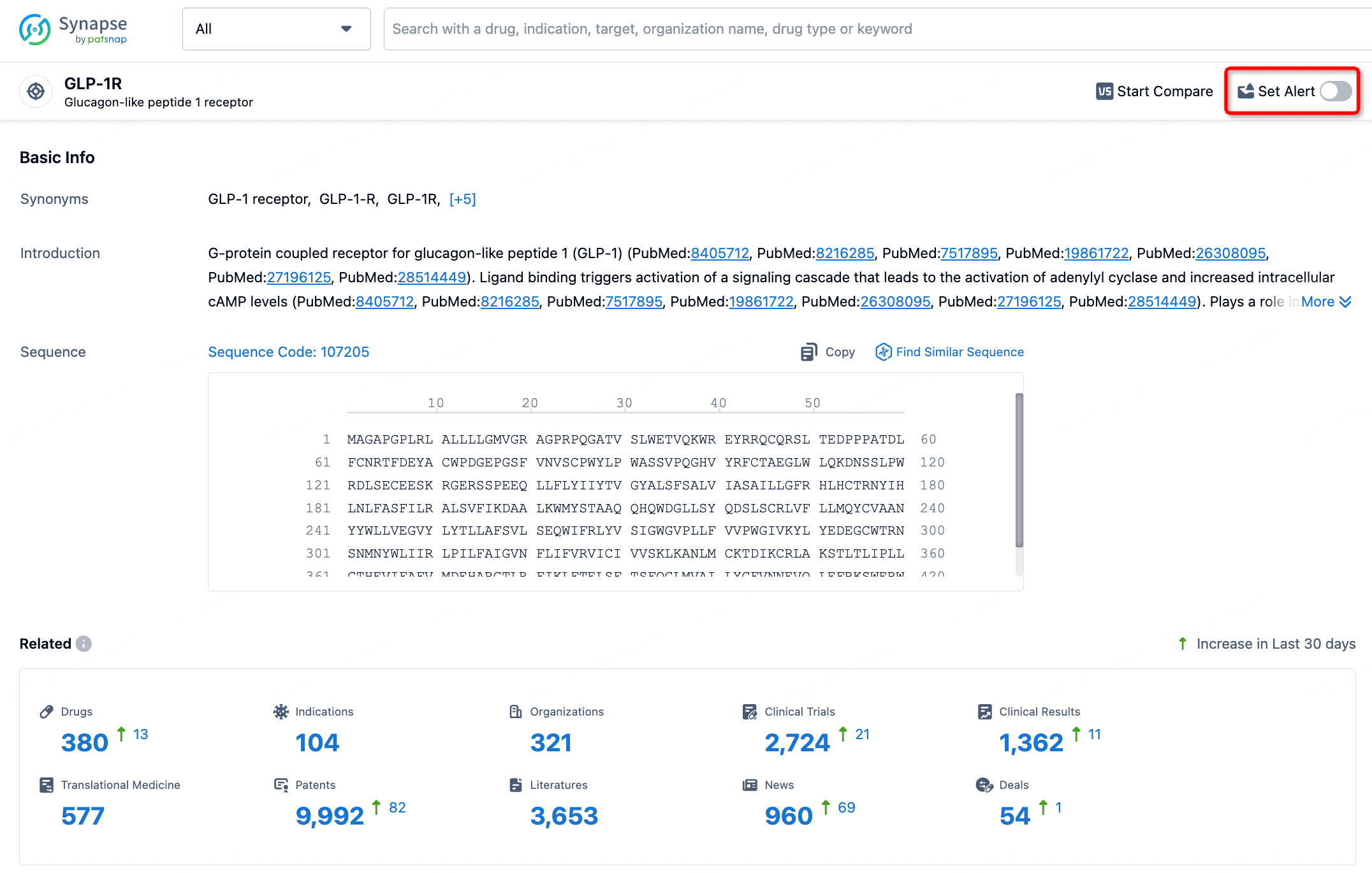Request Demo
What are ERAP1 inhibitors and how do they work?
25 June 2024
Endoplasmic Reticulum Aminopeptidase 1 (ERAP1) is an enzyme that plays a critical role in the immune system, particularly in the antigen presentation pathway. This enzyme trims peptides to optimal lengths for binding to Major Histocompatibility Complex (MHC) class I molecules, which are then presented on the cell surface for recognition by CD8+ T cells. ERAP1 inhibitors are designed to modulate this process, offering potential therapeutic benefits in various diseases, particularly those involving immune system dysregulation.
ERAP1 inhibitors function by specifically binding to the active site of the ERAP1 enzyme, thereby blocking its ability to trim peptides. This inhibition can lead to alterations in the peptide repertoire presented by MHC class I molecules. By modifying the peptide landscape, ERAP1 inhibitors can potentially enhance or diminish the immune response depending on the therapeutic need. For instance, in autoimmune diseases where the immune system erroneously targets the body's own tissues, ERAP1 inhibitors could be used to reduce the presentation of self-antigens, thereby decreasing the likelihood of an autoimmune attack. Conversely, in cancer, these inhibitors could be employed to modify the antigenic peptides presented on the surface of tumor cells, making them more recognizable to immune cells and thus enhancing anti-tumor immunity.
One of the most significant applications of ERAP1 inhibitors is in the treatment of autoimmune diseases. Conditions such as ankylosing spondylitis, rheumatoid arthritis, and psoriasis have been linked to specific ERAP1 variants. These genetic associations suggest that ERAP1 plays a pivotal role in the pathogenesis of these diseases by altering the peptide repertoire presented to the immune system. By inhibiting ERAP1, it may be possible to reduce the presentation of pathogenic peptides, thereby alleviating the autoimmune response. Clinical trials are ongoing to determine the efficacy and safety of ERAP1 inhibitors in these conditions, and early results appear promising.
In addition to autoimmune diseases, ERAP1 inhibitors have potential applications in cancer immunotherapy. The immune system often fails to recognize cancer cells as foreign due to the lack of highly immunogenic peptides on their surface. By inhibiting ERAP1, researchers aim to alter the peptides presented by MHC class I molecules on cancer cells, making them more detectable by CD8+ T cells. This could lead to a more robust immune response against the tumor, complementing existing immunotherapies such as checkpoint inhibitors. Preclinical studies have shown that ERAP1 inhibitors can enhance the presentation of tumor antigens, and clinical trials are underway to explore their efficacy in various cancers.
ERAP1 inhibitors also have potential in viral infections. Many viruses have evolved mechanisms to evade immune detection by manipulating the host's antigen presentation pathways. By inhibiting ERAP1, it may be possible to alter the peptide repertoire in a way that enhances viral antigen presentation, thereby improving the immune system's ability to recognize and eliminate infected cells. This approach could be particularly useful in chronic viral infections like hepatitis B and C, where the immune system struggles to mount an effective response.
Despite the promise of ERAP1 inhibitors, several challenges remain. One of the primary concerns is the potential for off-target effects, as ERAP1 is involved in various physiological processes beyond antigen presentation. Additionally, the long-term effects of modulating immune responses through ERAP1 inhibition are not yet fully understood, necessitating extensive clinical testing. However, ongoing research and development efforts are focused on optimizing the specificity and safety of these inhibitors to maximize their therapeutic potential.
In conclusion, ERAP1 inhibitors represent a promising new class of therapeutics with broad applications in autoimmune diseases, cancer, and viral infections. By specifically targeting the peptide trimming function of ERAP1, these inhibitors can modulate the immune response in a way that offers significant therapeutic benefits. As research progresses, it is hoped that ERAP1 inhibitors will become an integral part of the therapeutic arsenal for managing a variety of immune-related conditions.
ERAP1 inhibitors function by specifically binding to the active site of the ERAP1 enzyme, thereby blocking its ability to trim peptides. This inhibition can lead to alterations in the peptide repertoire presented by MHC class I molecules. By modifying the peptide landscape, ERAP1 inhibitors can potentially enhance or diminish the immune response depending on the therapeutic need. For instance, in autoimmune diseases where the immune system erroneously targets the body's own tissues, ERAP1 inhibitors could be used to reduce the presentation of self-antigens, thereby decreasing the likelihood of an autoimmune attack. Conversely, in cancer, these inhibitors could be employed to modify the antigenic peptides presented on the surface of tumor cells, making them more recognizable to immune cells and thus enhancing anti-tumor immunity.
One of the most significant applications of ERAP1 inhibitors is in the treatment of autoimmune diseases. Conditions such as ankylosing spondylitis, rheumatoid arthritis, and psoriasis have been linked to specific ERAP1 variants. These genetic associations suggest that ERAP1 plays a pivotal role in the pathogenesis of these diseases by altering the peptide repertoire presented to the immune system. By inhibiting ERAP1, it may be possible to reduce the presentation of pathogenic peptides, thereby alleviating the autoimmune response. Clinical trials are ongoing to determine the efficacy and safety of ERAP1 inhibitors in these conditions, and early results appear promising.
In addition to autoimmune diseases, ERAP1 inhibitors have potential applications in cancer immunotherapy. The immune system often fails to recognize cancer cells as foreign due to the lack of highly immunogenic peptides on their surface. By inhibiting ERAP1, researchers aim to alter the peptides presented by MHC class I molecules on cancer cells, making them more detectable by CD8+ T cells. This could lead to a more robust immune response against the tumor, complementing existing immunotherapies such as checkpoint inhibitors. Preclinical studies have shown that ERAP1 inhibitors can enhance the presentation of tumor antigens, and clinical trials are underway to explore their efficacy in various cancers.
ERAP1 inhibitors also have potential in viral infections. Many viruses have evolved mechanisms to evade immune detection by manipulating the host's antigen presentation pathways. By inhibiting ERAP1, it may be possible to alter the peptide repertoire in a way that enhances viral antigen presentation, thereby improving the immune system's ability to recognize and eliminate infected cells. This approach could be particularly useful in chronic viral infections like hepatitis B and C, where the immune system struggles to mount an effective response.
Despite the promise of ERAP1 inhibitors, several challenges remain. One of the primary concerns is the potential for off-target effects, as ERAP1 is involved in various physiological processes beyond antigen presentation. Additionally, the long-term effects of modulating immune responses through ERAP1 inhibition are not yet fully understood, necessitating extensive clinical testing. However, ongoing research and development efforts are focused on optimizing the specificity and safety of these inhibitors to maximize their therapeutic potential.
In conclusion, ERAP1 inhibitors represent a promising new class of therapeutics with broad applications in autoimmune diseases, cancer, and viral infections. By specifically targeting the peptide trimming function of ERAP1, these inhibitors can modulate the immune response in a way that offers significant therapeutic benefits. As research progresses, it is hoped that ERAP1 inhibitors will become an integral part of the therapeutic arsenal for managing a variety of immune-related conditions.
How to obtain the latest development progress of all targets?
In the Synapse database, you can stay updated on the latest research and development advances of all targets. This service is accessible anytime and anywhere, with updates available daily or weekly. Use the "Set Alert" function to stay informed. Click on the image below to embark on a brand new journey of drug discovery!
AI Agents Built for Biopharma Breakthroughs
Accelerate discovery. Empower decisions. Transform outcomes.
Get started for free today!
Accelerate Strategic R&D decision making with Synapse, PatSnap’s AI-powered Connected Innovation Intelligence Platform Built for Life Sciences Professionals.
Start your data trial now!
Synapse data is also accessible to external entities via APIs or data packages. Empower better decisions with the latest in pharmaceutical intelligence.


